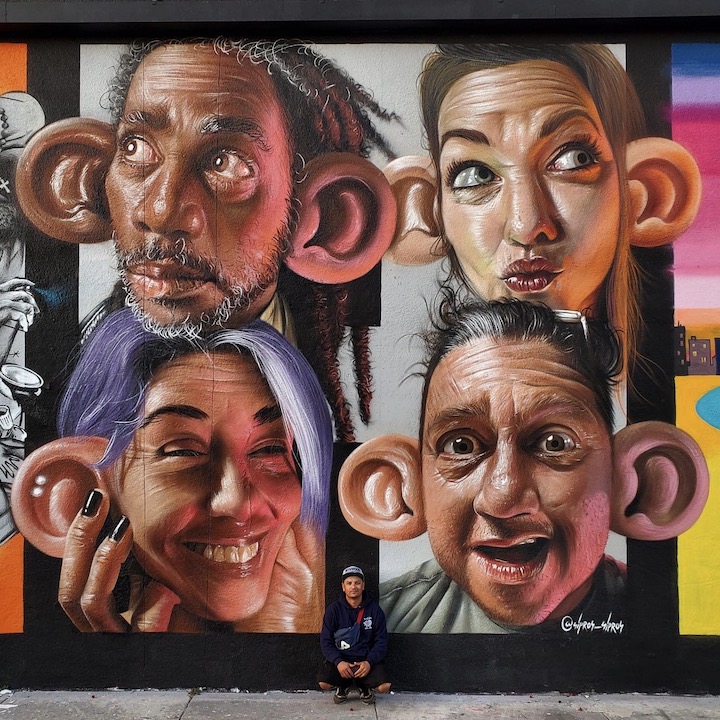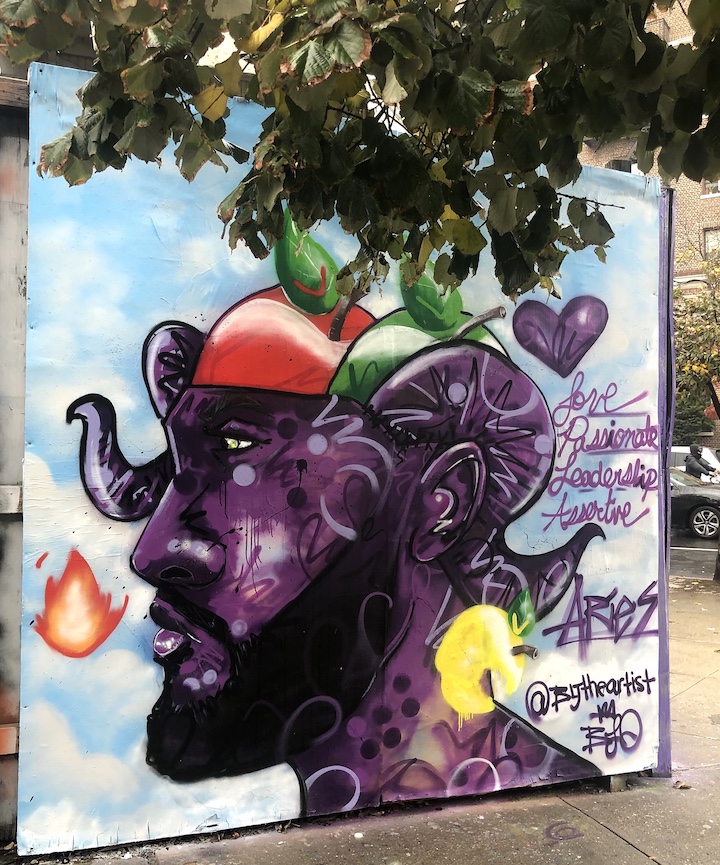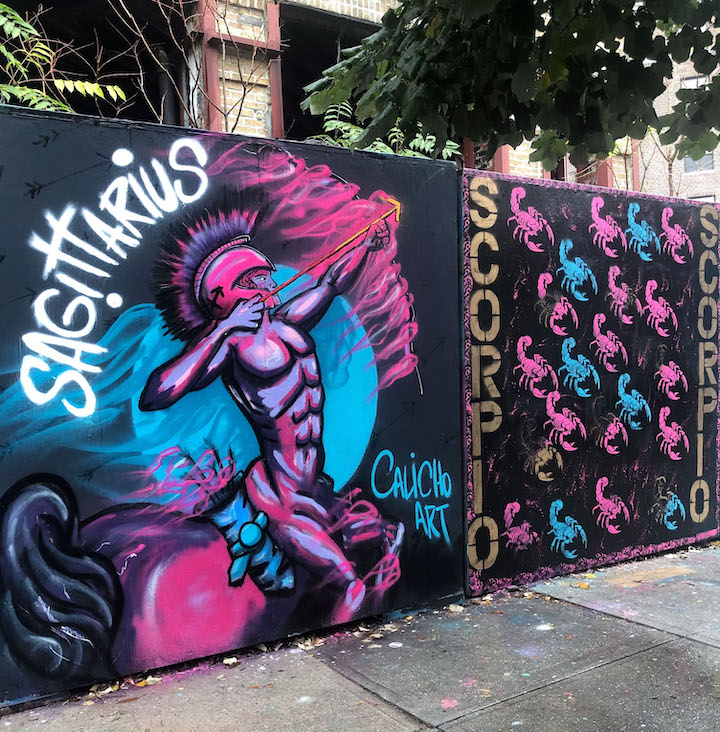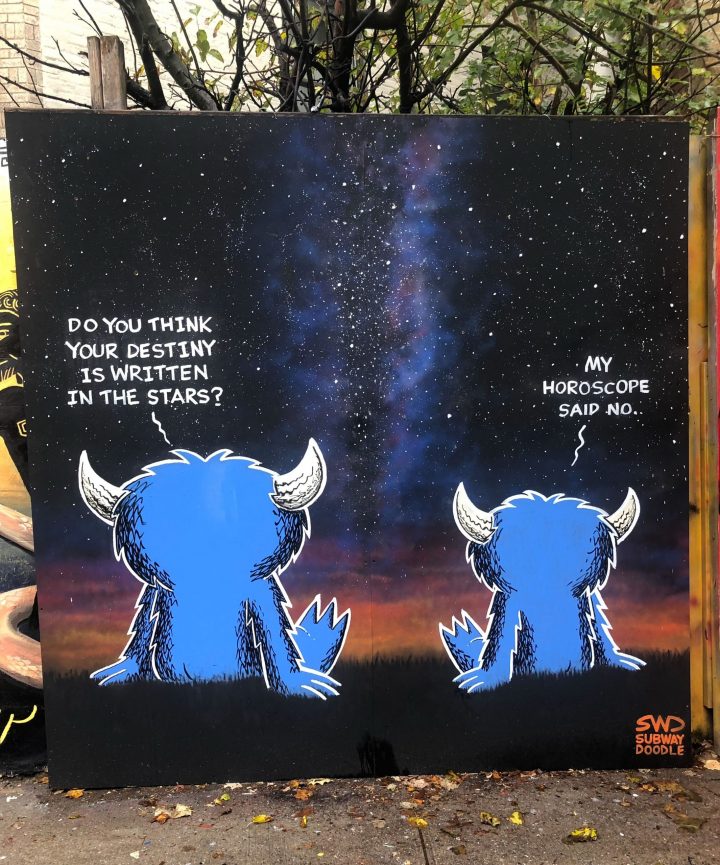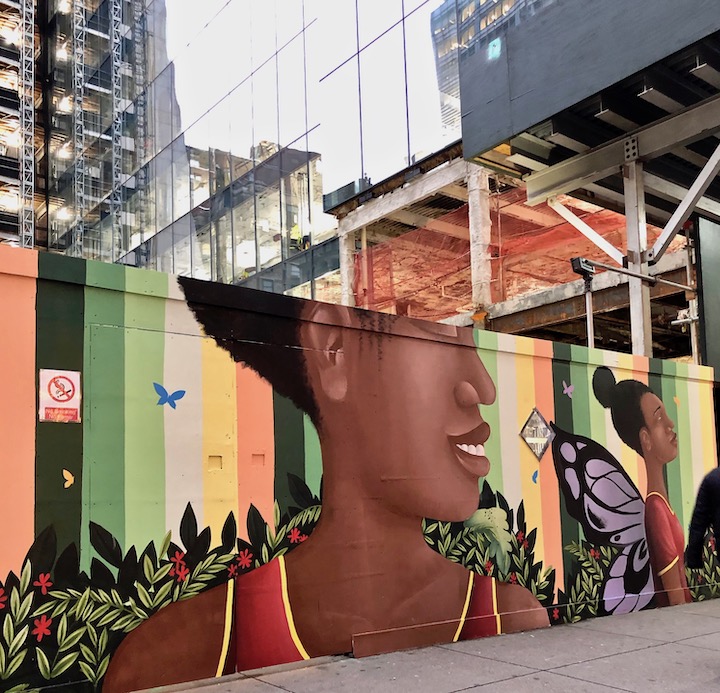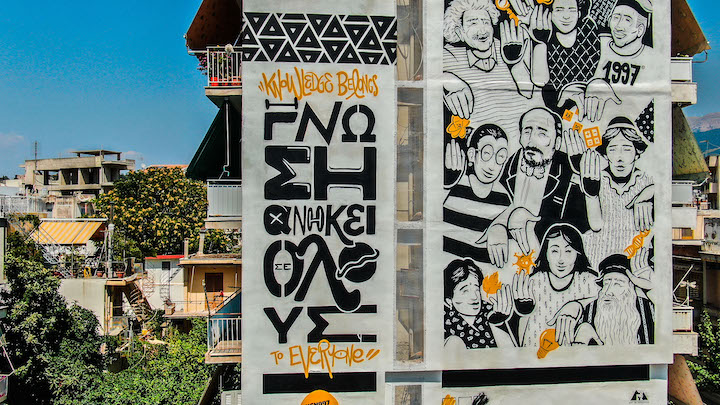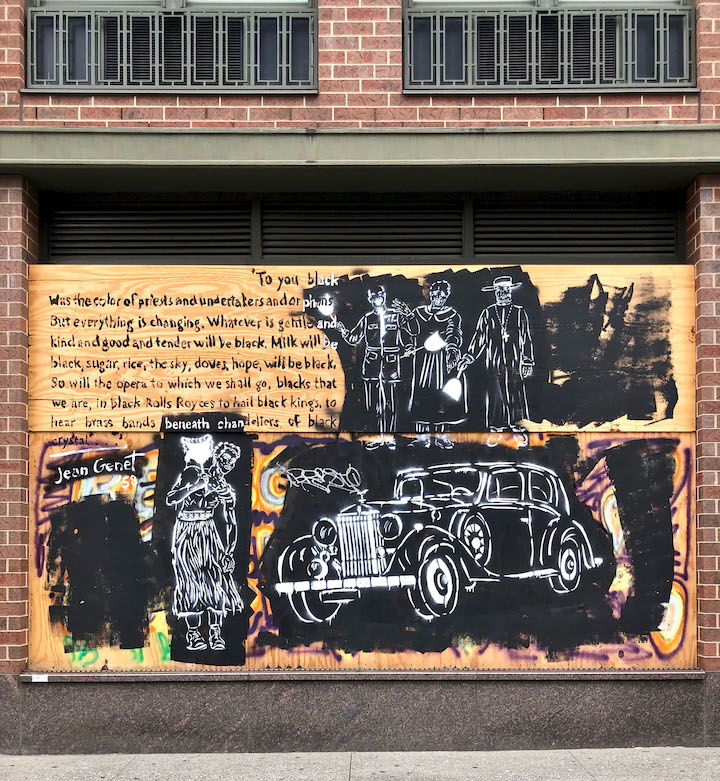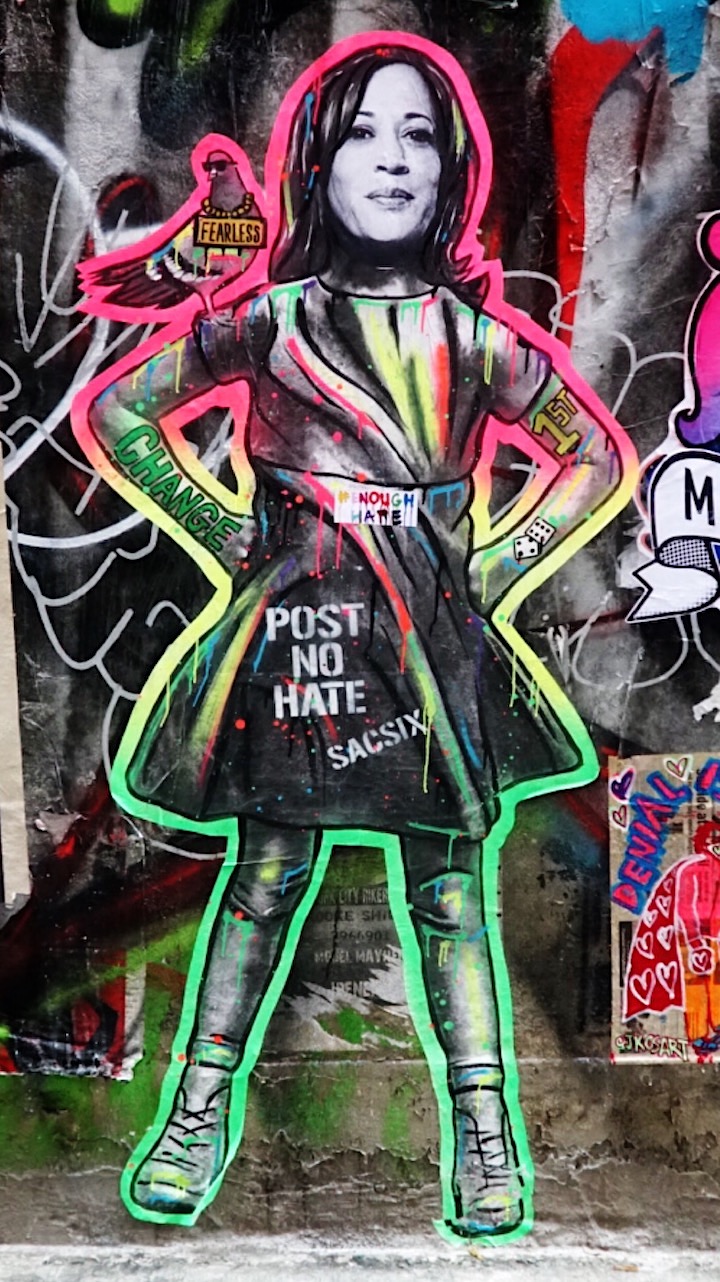
Few NYC street art spots are as reflective of our times as is Freeman’s Alley, located off Rivington Street on Manhattan’s Lower East Side. And in these challenging times, the nation’s precarious political state and its ongoing pandemic have been the major themes of the street art that has emerged there.
Pictured above is NYC-based artist SacSix‘s portrait of our vice president-elect, Kamala Harris — a representative of the change we so sorely need. Several more images captured this past Sunday follow:
NYC-based Raddington Falls‘ politically-conscious Lego-inspired characters

Crkshnk’s depicts former NYC mayor and current Trump attorney Rudy Giuliani as court jester

California-based Jeremy Novy laments the loss of “free hugs” in the time of Covid-19

NYC-based DeGrupo celebrates President-elect Joe Biden’s victory

NYC-based Eye Sticker — in this pre-election paste-up — asks us to vote out “Trumpkin Season”

Photo credits: 1, 2, 4-6 Ana Candelaria; 3 Lois Stavsky
{ 0 comments }





